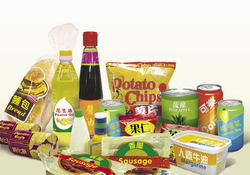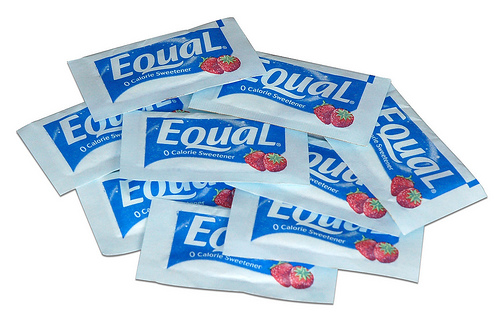
Food additives are substances added to food to preserve flavor or enhance its taste and appearance.
Some additives have been used for centuries; for example, preserving food by pickling (with vinegar), salting, as with bacon, preserving sweets or using sulfur dioxide as in some wines. With the advent of processed foods in the second half of the 20th century, many more additives have been introduced, of both natural and artificial origin.
Food additives serve five main functions:
1. Maintain product consistency
Substances called emulsifiers provide a consistent texture and prevent products from separating. Stabilizers and thickeners provide an even texture. Anticaking agents allow substances to flow freely.
2. Improve or preserve the nutrient value
Many foods and drinks are fortified and enriched to improve the nutritional status of the United States population. For example, vitamins and minerals are added to many foods including flour, cereal, margarine, and milk. This helps to make up for vitamins or minerals that may be low or completely lacking in a person's diet. All products that contain added nutrients must be labeled.
3. Maintain the wholesomeness of foods
Contamination from bacteria can allow foodborne illnesses to occur. Preservatives reduce the spoilage that air, fungi, bacteria, or yeast can cause. Certain preservatives help preserve the flavor in baked goods by preventing the fats and oils from going bad. They also keep fresh fruits from turning brown when exposed to the air.
4. Control the acidity and alkalinity and provide leavening
Specific additives help change the acid-base balance of foods to obtain a desired taste, color, or flavor. Leavening agents that release acids when they are heated react with baking soda to help biscuits, cakes, and other baked goods rise.
5. Provide color and enhance flavor
Certain colors improve the appearance of foods. There are many spices and natural and synthetic flavors that bring out the best in the flavor of food.
Categories
Food additives can be divided into several groups, although there is some overlap between them.
Acids
Food acids are added to make flavors "sharper", and also act as preservatives and antioxidants. Common food acids include vinegar, citric acid, tartaric acid, malic acid, fumaric acid, and lactic acid.
Acidity regulators
Acidity regulators are used to change or otherwise control the acidity and alkalinity of foods.
Anticaking agents
Anticaking agents keep powders such as milk powder from caking or sticking.
Antifoaming agents
Antifoaming agents reduce or prevent foaming in foods.
Antioxidants
Antioxidants such as vitamin C act as preservatives by inhibiting the effects of oxygen on food, and can be beneficial to health.
Bulking agents
Bulking agents such as starch are additives that increase the bulk of a food without affecting its nutritional value.
Food coloring
Colorings are added to food to replace colors lost during preparation, or to make food look more attractive.
Color retention agents
In contrast to colorings, color retention agents are used to preserve a food's existing color.
Emulsifiers
Emulsifiers allow water and oils to remain mixed together in an emulsion, as in mayonnaise, ice cream, and homogenized milk.
Flavors
Flavors are additives that give food a particular taste or smell, and may be derived from natural ingredients or created artificially.
Flavor enhancers
Flavor enhancers enhance a food's existing flavors. They may be extracted from natural sources (through distillation, solvent extraction, maceration, among other methods) or created artificially.
Flour treatment agents
Flour treatment agents are added to flour to improve its color or its use in baking.
Glazing agents
Glazing agents provide a shiny appearance or protective coating to foods.
Humectants
Humectants prevent foods from drying out.
Tracer gas
Tracer gas allow for package integrity testing to prevent foods from being exposed to atmosphere, thus guaranteeing shelf life.
Preservatives
Preservatives prevent or inhibit spoilage of food due to fungi, bacteria and other microorganisms.
Stabilizers
Stabilizers, thickeners and gelling agents, like agar or pectin (used in jam for example) give foods a firmer texture. While they are not true emulsifiers, they help to stabilize emulsions.
Sweeteners
Sweeteners are added to foods for flavoring. Sweeteners other than sugar are added to keep the food energy (calories) low, or because they have beneficial effects for diabetes mellitus and tooth decay and diarrhea.
Thickeners
Thickeners are substances which, when added to the mixture, increase its viscosity without substantially modifying its other properties.
Food additives and processed foods
There is a common misconception that processed foods automatically contain food additives. Foods like long-life milk, canned foods and frozen foods are all processed, yet none of them need extra chemicals.
foods are all processed, yet none of them need extra chemicals.
If you are unsure whether or not a product contains an additive, check the label. However, some listed ingredients may contain food additives without mentioning them on the label. For instance, ‘margarine’ might be a listed ingredient, and margarine contains food additives.
Here is some of most used additives:
Agar (E406) Vegetable gum used as a stabilizer or thickener.
Alginates (E400-404) Seaweed products used as a thickener.
Ammonium chloride Chemical used to help yeast grow in bread.
Annato (E600b) Used to colour yogurt, margarine and smoked fish.
Anti-caking agent Used to absorb moisture and prevent caking or lumping in powdered products.
Antioxidant (E300-321) Protect food from oxidation or breakdown on exposure to air.
Baking powder Mix of bicarbonate of soda and an acid such as cream of tartar, used to rice cakes.
Calcium chloride Chemical that helps bread rice. It is also used to keep fruits and vegetables firm during cooking.
Calcium propionate (E282) Used to prevent mould from growing in cheese and backed items.
Calcium sulphate (E516) Used to boost calcium content in bread and keep tomato products and canned vegetables firm.
Caramel (E150) Colouring agent made from toasted sugar.
Carob ( locust bean) gum (E410) Thickener used to improve texture and to blend ingredients together.
Carrageenan (Irish moss, E407) Seaweed product used in ice cream to stabilize the size of ice crystals.
Cellulose (E460) Plants additive used to improve texture and to retain moisture in sweets and jams.
Citric acid (E330) Chemical derived from citrus fruits that is used to maintain food colour, increase tartness, and prevent foods from becoming rancid.
Dextrin A starch, commonly used as a thickener in gravies, sauces and baking mixes.
Emulsifiers Substances that help prevent the separation of ingredients that would not normally mix, such as oil and water. Used in salad dressing and mayonnaise where they prevent oil separating from vinegar.
Guar gum (E412) Plants substance used as a thickening agent in sauces, milk products and baking mixes.
Humectants Help maintain moisture in foods by absorbing water from the air. They may be listed as glycerol, propylene glycol and sorbitol.
Hydrolyzed vegetable protein Derived from soya beans, wheat or corn and used as a flavour enhancer.
Lecithin (E322) Typically derived from eggs and soya beans and used to keep foods from separating. Also prevents loss of flavour and rancidity.
Modified food starch (E1414) Substance made from grains, potatoes or tapioca that keeps ingredients from separating. Also prevents loss of flavour and rancidity.
MGS (E612) Monosodium glutamate (MSG) is used as flavour enhancer in a variety of foods.
Pectin (E440) Fruit-derived additive used in jams and soft sweets as a thickener to prevent separation of ingredients and give a gel like texture.
Phosphoric acid (E338) used to make food acidic and to give texture to soft drinks.
Polysorbates Blending agents used to keep oil and water from separating.
Potassium sorbate (E202) Used in cheese, margarine and wine to stop microbes causing food spoilage.
Raisingagents Products such as yeast and baking powder that cause cakes and batters to increase in volume during cooking.
Sequestrants Chemicals that prevent discoloration or rancidity in food.
Silicon dioxide Used to keep salt from clumping of foaming.
Sodium aluminium phosphate Used in cheese processing to help congealing. Also used to keep processed fruits and vegetables firm.
Sodium benzoate (E211) Prevents microbes spoiling processed food.
Sodium erythorbate (E316) Keeps flavour and colour in cured meats.
Sodium sulphate (E515) Used as an acidity regulator.
Sodium stearoyl-2-lactylate (E481) Helps bread dough bake evenly and prevents spoilage. Prevents the separation of oil and water in salad dressings and non-dairy creamers.
Sulphur dioxide (E220) Used to prevent discoloration in dried fruits and inhibit bacterial growth in wine.
Tartrazine (E102) A coal-tar derivative used to colour foods.
Xanthan gum (E415) Used as a thickener, emulsifier and stabilizer in dairy products, puddings and desserts and dressings.
Sweeteners
In addition to adding sweetness, sugar's distinctive properties enable it to play an important role in food preservation. Have many sweeteners likecalorie-free and sugar alcohols (polyols) are used by food manufactures in their products. These are many times sweetener than sugar and much less is needed with a corresponding decrease in the calorie content. Here are the most commonly used sweeteners:
Acesulfame-K (E950) This is 200 times sweeter than sugar yet contains only four calories per teaspoon. It is safe and since it is not absorbed by the body, is ideal for people with diabetes.
Aspartame (E9510) This synthetic sugar is 200 times sweeter than sugar, yet contains less than four calories per teaspoon. It is not suitable for baking or cooking. A review in 2002 by SCF confirmed the safety of this sweetener for adults and children. However, aspartames is potentially life threatening for people who have the inherited condition phenylketonuria (PKU), in which the body cannot process the
amino acid phenylalanine. Products containing aspartame are marked with a warning.
Saccharin (E954) This was the first substitute sweetener and remains one of the most popular. It is 300 times sweeter than sugar and is the most suitable for baking and cooking. Studies confirm it is safe and poses no danger to humans.
Sucralose This is 600 times sweeter than regular sugar and is the most versatile sweetener. It is available in granular form that can be used to replace sugar in drinks and rrecipes.
Sorbitol (E420) Used as a sweetener and to protect against moisture loss in food products, sorbitols is 60% as sweet as sugar, with one third fewer calories. It providers a cool, pleasant taste and withstands high temperatures.
Mannitol (E421) This sweetener is also used in food products as a stabilizer, bulking agent and humectant. It is more than 70% as sweet as sugar and has a cool, sweet taste.
What are the risks?
The possible health risks of food additives are the subject of fierce controversy. Most food additives are considered safe.
One in 8-12000 babies is born without the ability to metabolise phenylalanine from any dietary source. Phenylalanine is a naturally occurring essential amino acid found in all protein (including mother's milk) and is one of the two amino acids in aspartame. All children in the UK are screened for phenylketonuria shortly after birth and any found with it have to follow a strict diet for the rest of their lives, controlling the amount of protein they consume.
essential amino acid found in all protein (including mother's milk) and is one of the two amino acids in aspartame. All children in the UK are screened for phenylketonuria shortly after birth and any found with it have to follow a strict diet for the rest of their lives, controlling the amount of protein they consume.
Toxic levels of phenylalanine in the blood can result in mental retardation. Scientists are also investigating a possible link between aspartame and changes in brain function. People have reported dizziness, headaches, epileptic-like seizures, and menstrual problems after consuming aspartame. However, concerns about a link between aspartame and cancer seem unfounded after extensive recent research.
Other additives highlighted by The Center for Science in the Public Interest (CSPI), a US organisation that campaigns for food safety, include:
Caffeine: linked to peptic ulcers, insomnia, nervousness and birth defects.
Monosodium Glutamate (MSG): linked to headaches, tightness in the chest, and a burning sensation in the forearms and back of the head.
Nitrite and Nitrate: Meat preservatives that can form powerful cancer causing chemicals when heated.
Saccharin: linked to cancer is laboratory animals.
There has been significant controversy associated with the risks and benefits of food additives. Some artificial food additives have been linked with cancer, digestive problems, neurological conditions,ADHD, heart disease or obesity. Natural additives may be similarly harmful or be the cause of allergic reactions in certain individuals. For example, safrole was used to flavor root beer until it was shown to be carcinogenic. Due to the application of the Delaney clause, it may not be added to foods, even though it occurs naturally in sassafras and sweet basil.
![]()
Disclaimer: This website is for information purposes only. By providing the information contained herein we are not diagnosing, treating, curing, mitigating, or preventing any type of disease or medical condition. Before beginning any type of natural, integrative or conventional treatment regime, it is advisible to seek the advice of a licensed healthcare professional.



























